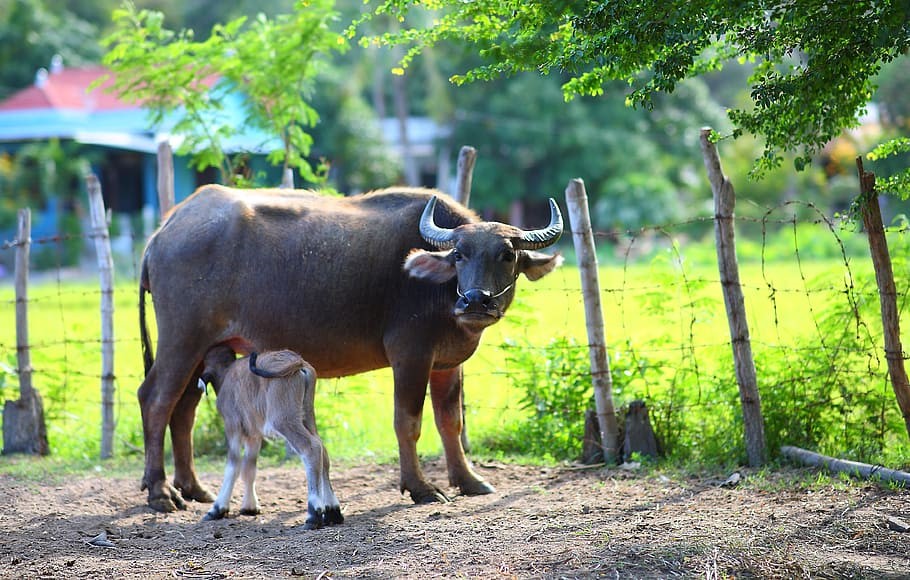Description

Disclaimer: Copyright infringement not intended.
Context
- With the birth of first IVF calf of a Buffalo breed namely Banni in the country, India’s OPU - IVF work has reached to next level.
- This first IVF Banni calf is born out of 6 Banni IVF pregnancies established at the doorsteps of a farmer.
About
- In vitro fertilization (IVF) is used clinically in cattle and humans.
- In vitro fertilisation (IVF) is a process of fertilisation where an egg is combined with sperm in vitro ("in glass").
- The process involves monitoring and stimulating a female’s ovulatory process, removing an ovum or ova (egg or eggs) from her ovaries and letting sperm fertilise them in a culture medium in a laboratory.
- After the fertilised egg (zygote) undergoes embryo culture, it is implanted in the female.
- IVF is a type of assisted reproductive technology used for infertility treatment and gestational surrogacy.
- A fertilised egg may be implanted into a surrogate's uterus, and the resulting child is genetically unrelated to the surrogate.
- Some countries have banned or otherwise regulate the availability of IVF treatment, giving rise to fertility tourism. Restrictions on the availability of IVF include costs and age, in order for a person to carry a healthy pregnancy to term.
Benefits of Animal IVP
- Some of the key benefits of IVP as a reproductive tool are:
Overcome Physiological Problems
- IVF can be used to produce offspring from superior gene animals that are non-productive in traditional methods.
- The reasons could be abnormal or damaged reproductive tracts, poor response to stimulation or idiopathic reasons.
Preserve Valuable Genetics
- Genetically elite animals can be repeatedly used as egg donors and the embryos produced transferred into less valuable animals, producing offspring with favourable genetics. In the case of the unexpected death / slaughter of a valuable animal, eggs can be rescued from the ovaries and the resultant embryos can be transferred into recipients.
Shorter Generational Interval
- Typically, donor oocytes can be aspirated on a two-week cycle whereas most embryo transfer (ET) programmes operate on a 60 day cycle. This allows for increased propagation of premium livestock.
Other advantages
- increase in the number of offspring per female
- easier and more rapid exchange of genetic material between countries
- less transport of live animals, thereby reducing risks of disease transmission
- storage and expansion of rare genetic stock.
Note: The main disadvantage is the high cost of the technique.
Conclusion
- Both the government and the scientist fraternity see a great potential in the field of IVF of buffaloes and are striving hard to improve cattle wealth in the country.
https://pib.gov.in/PressReleasePage.aspx?PRID=1765939














